19 Amazing Animals Found Roaming The U.S.
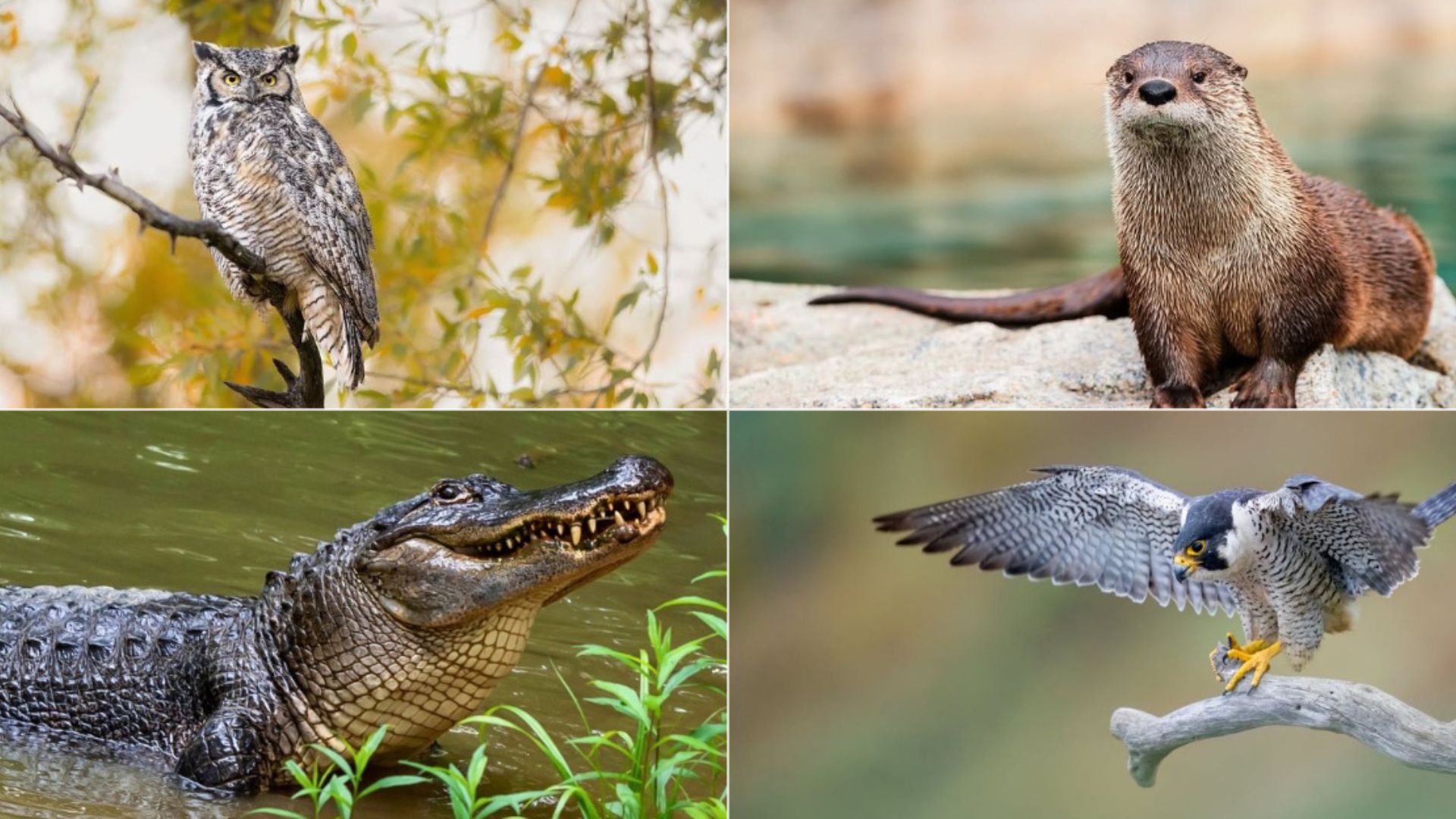
The United States boasts an impressive array of wildlife, from the sweeping plains to the dense forests and beyond.
Among these, twenty animals stand out for their uniqueness, charm, and sometimes peculiar habits.
Embark on this wildlife adventure as we discover these remarkable creatures and what makes them so captivating.
1. American Bison
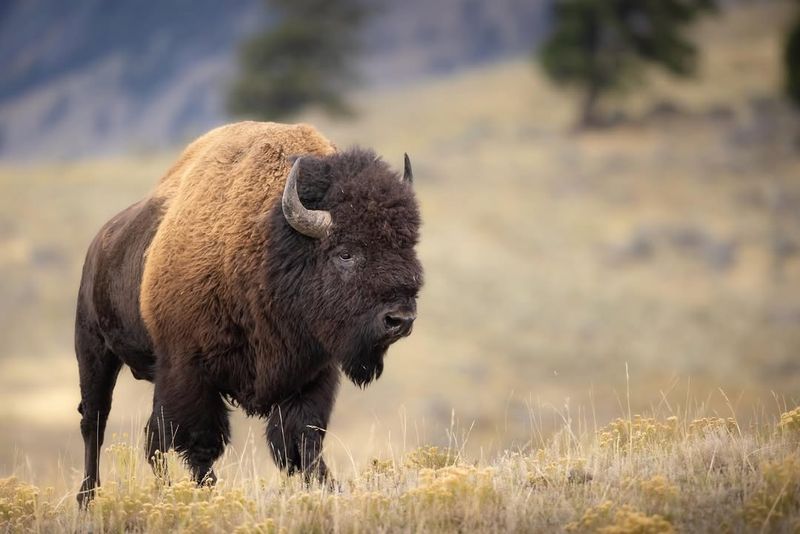
Roaming the vast prairies, the American Bison is an emblem of the wild U.S., often mistaken for a buffalo. These colossal creatures can weigh up to 2,000 pounds and have a striking presence. With their shaggy coats and curved horns, they have a distinctive appearance that captures attention wherever they go.
While they may seem docile, bison are surprisingly agile and can sprint at speeds of up to 35 miles per hour. Imagine that – a race between a bison and a professional sprinter, and you’ll find a close match! Watching them graze peacefully, one might feel an overwhelming sense of tranquility, but don’t be fooled – they’re always on high alert.
These majestic beasts were once on the brink of extinction, but thanks to conservation efforts, their numbers have bounced back. Now, they roam freely in places like Yellowstone National Park, showcasing their resilience and strength. When visiting, always keep a respectful distance; after all, they didn’t earn their nickname “thunder beasts” for nothing! Observing them in their natural habitat is truly an awe-inspiring experience.
2. Bald Eagle
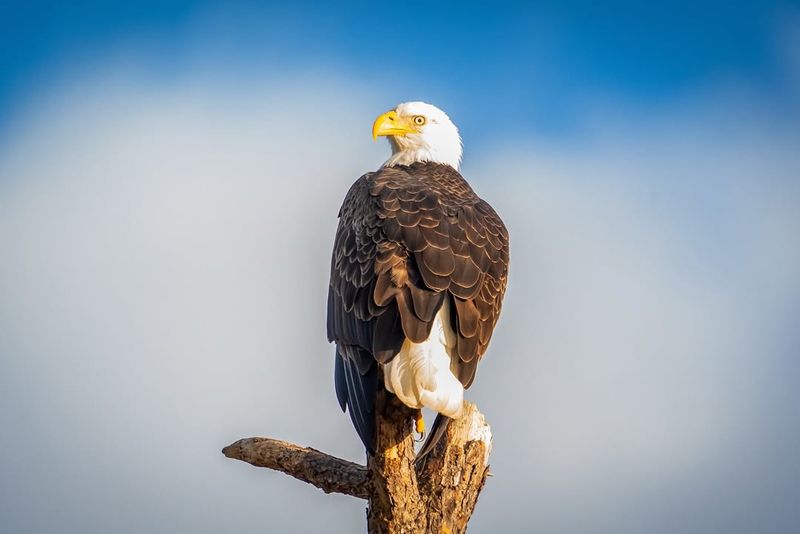
Soaring high above with an air of majesty, the Bald Eagle is not just a national symbol but a testament to the beauty of the American wilderness. With wingspans reaching up to 7.5 feet, these regal birds dominate the skies with grace and authority. Their piercing eyes are always on the lookout for their next meal.
Feeding primarily on fish, bald eagles are often seen gliding effortlessly over bodies of water. Their fishing technique is nothing short of spectacular – swooping down and snatching their prey with pinpoint precision. Talk about dining with finesse! When they’re not hunting, they can be found perched high up in trees, surveying their domain like true monarchs.
The comeback of the bald eagle is a conservation success story. From near extinction due to DDT poisoning, their population has made a remarkable recovery. Spotting one in the wild is a memorable experience, a reminder of nature’s resilience and the importance of protecting our natural heritage.
3. American Alligator
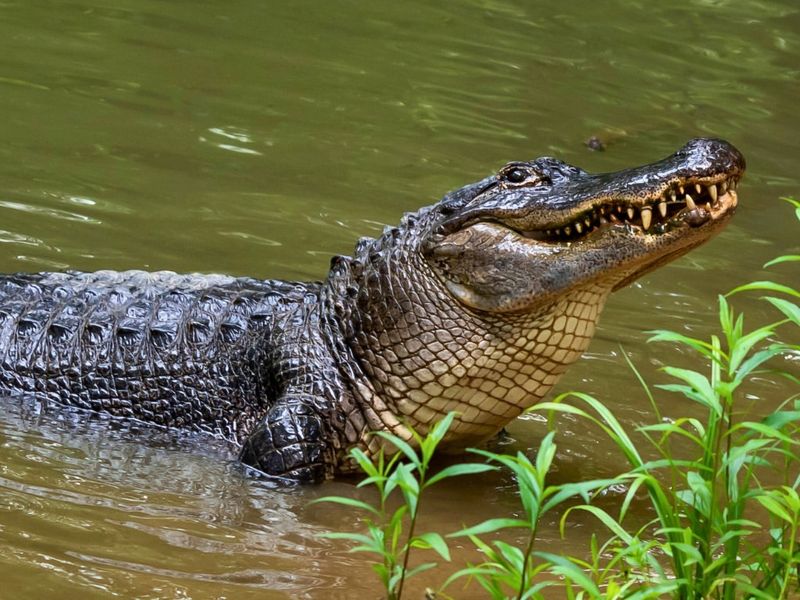
Lurking in the swampy waters of the southeastern U.S., the American Alligator is both fearsome and fascinating. These prehistoric-looking reptiles can grow to an impressive 13 to 15 feet in length, making them one of the largest reptiles in North America. When they lie still, they resemble floating logs, but don’t be deceived by their lazy demeanor.
Alligators are formidable predators, with a bite force that rivals some of the strongest in the animal kingdom. Despite their fearsome reputation, they’ve been known to coexist peacefully with humans, provided we respect their space. A sunbathing alligator might look like it’s on vacation, but it’s always ready for action.
Conservation efforts have helped the American Alligator bounce back from the brink of extinction. With their habitats protected, these reptiles now thrive in areas like the Everglades. Observing an alligator in its natural environment is a thrilling experience, a chance to witness a living relic of the past.
4. California Sea Lion
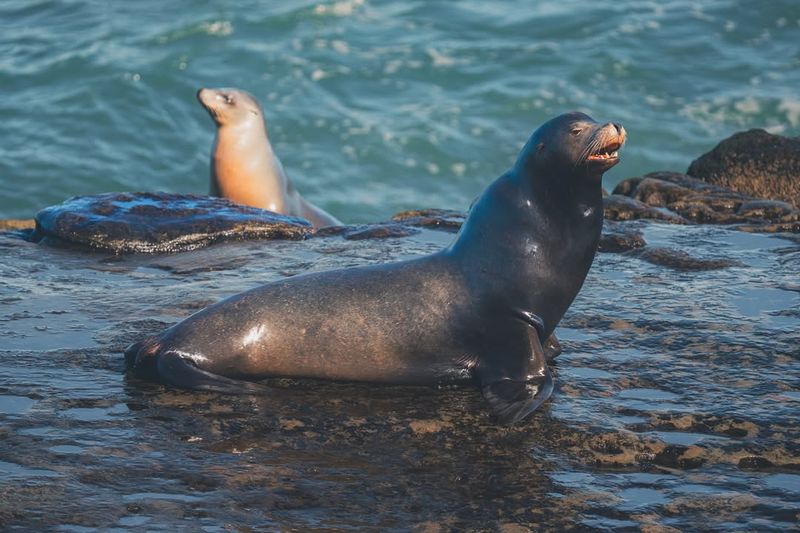
Playful and charismatic, the California Sea Lion is the life of the party along the Pacific coast. These marine mammals are known for their intelligence and agility, often seen performing impressive flips and acrobatics both in and out of the water.
Weighing up to 600 pounds, these sea lions are surprisingly graceful swimmers. They can dive up to 900 feet, holding their breath for several minutes while they hunt for fish and squid. On land, their loud barks and curious nature make them a favorite among wildlife enthusiasts and beachgoers alike.
California sea lions are a common sight in places like San Francisco’s Pier 39, where they gather in large colonies. Their playful antics and social behavior provide endless entertainment. While they might seem approachable, it’s wise to keep a respectful distance; after all, they’re still wild animals. Watching them frolic in the waves is a delightful reminder of the wonders of the ocean.
5. Grizzly Bear
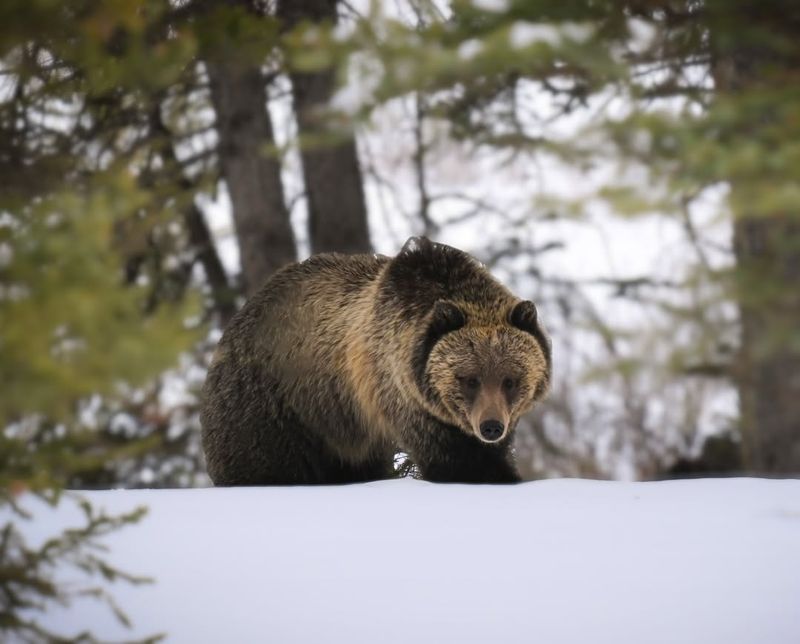
With a presence that’s both awe-inspiring and a tad intimidating, the Grizzly Bear is a true icon of the American wilderness. These hefty bears can weigh up to 1,300 pounds and stand over 8 feet tall on their hind legs. Their distinctive hump and powerful build make them masters of their domain.
Grizzlies are omnivorous, with a diet ranging from berries to fish, particularly favoring the annual salmon run. Watching a grizzly catch a leaping salmon mid-air is like witnessing nature’s version of a gourmet chef at work. Their strength and agility are truly impressive.
While they’re generally solitary creatures, grizzlies gather in large numbers when food is plentiful. Despite their fearsome reputation, they tend to avoid human interaction. Observing these majestic animals from a safe distance is an unforgettable experience, offering a glimpse into the untamed beauty of the wilderness. Remember to always respect their space and admire them from afar, as these are truly wild creatures.
6. Great Horned Owl
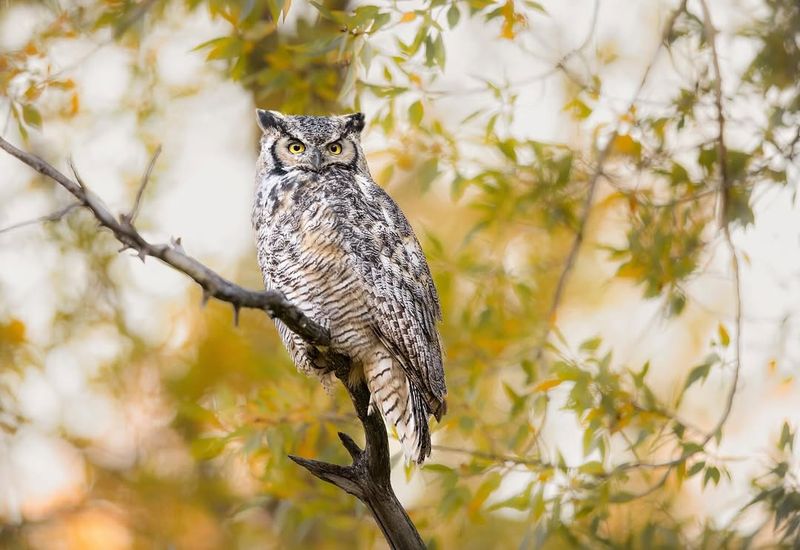
With tufts that resemble horns and a gaze that could pierce the thickest fog, the Great Horned Owl is a master of the night. This formidable predator is known for its incredible hunting skills and adaptability to various environments across the U.S.
Their distinct “hoo-hoo-hoo” call echoes through the night, sending shivers down the spines of unsuspecting prey. Equipped with powerful talons and exceptional hearing, these owls can swoop down silently to snatch up their next meal. Talk about being stealthy!
Despite their fearsome reputation among smaller creatures, great horned owls are a sight to behold. Their ability to rotate their heads nearly 180 degrees is astounding, allowing them to keep a watchful eye on their surroundings. Encountering one in the wild is a magical experience, a chance to witness the silent dance of a nocturnal hunter.
7. Monarch Butterfly
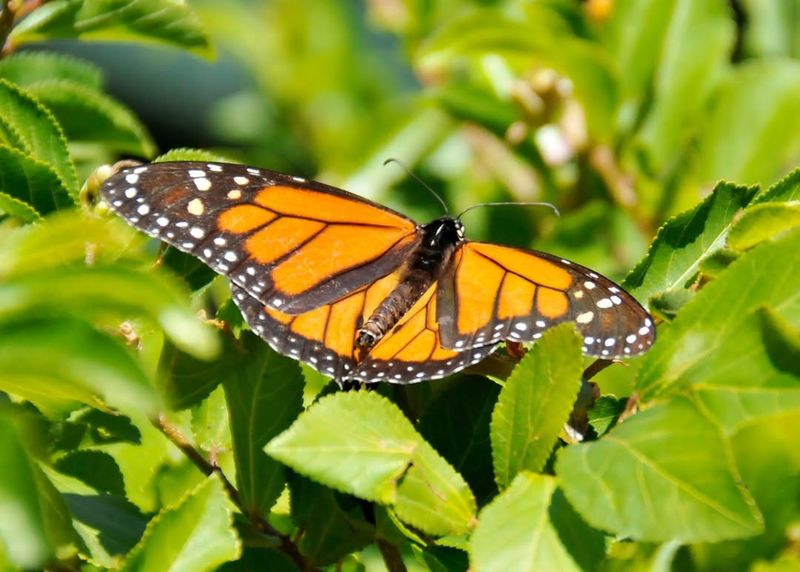
Fluttering gracefully through the air, the Monarch Butterfly is a marvel of nature’s design. Known for their striking orange and black wings, these butterflies undertake one of the most astonishing migrations in the animal kingdom.
Traveling up to 3,000 miles from Canada to central Mexico, monarchs showcase endurance that belies their delicate appearance. Their journey is fraught with challenges, yet they persevere, guided by an innate ability to navigate over vast distances. They rely on milkweed plants for reproduction, making these plants crucial to their survival.
Conservation efforts are key to ensuring monarchs continue to grace our landscapes. Planting milkweed and protecting their migratory routes can help sustain their population. Spotting a monarch butterfly in the wild is a moment of pure delight, a reminder of the intricate beauty and resilience of nature. Witnessing their journey is an inspiring testament to perseverance against all odds.
8. North American River Otter
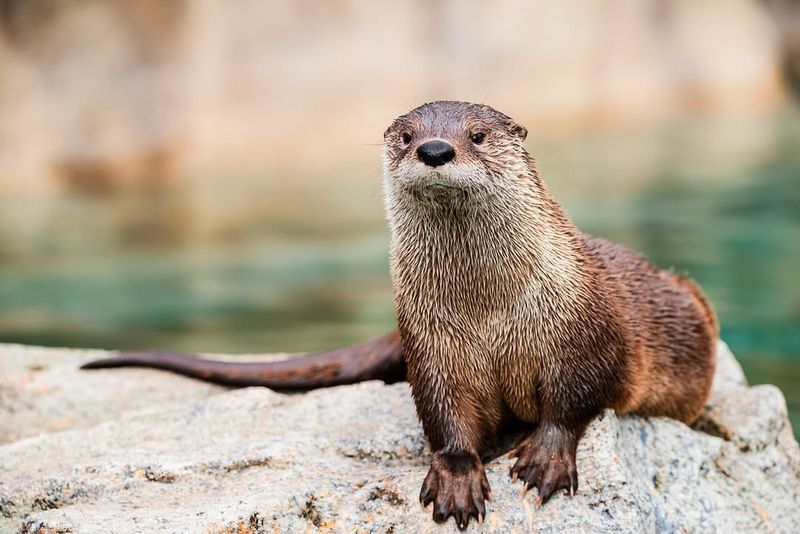
Sliding down riverbanks with all the grace of a seasoned tobogganer, the North American River Otter is the embodiment of playful energy. These aquatic mammals are known for their boundless curiosity and engaging antics, captivating anyone lucky enough to observe them.
River otters are skilled swimmers, capable of holding their breath underwater for up to eight minutes while they hunt for fish and crustaceans. Their streamlined bodies and webbed feet make them agile in the water, where they can often be seen diving and chasing their prey with unbridled enthusiasm.
Found in various freshwater habitats, river otters rely on clean water and abundant food sources. Conservation efforts have been crucial in maintaining their populations, ensuring these lively creatures continue to brighten our waterways. Watching them at play is a reminder of the joy and vitality of life, a small spectacle filled with laughter and wonder.
9. Peregrine Falcon
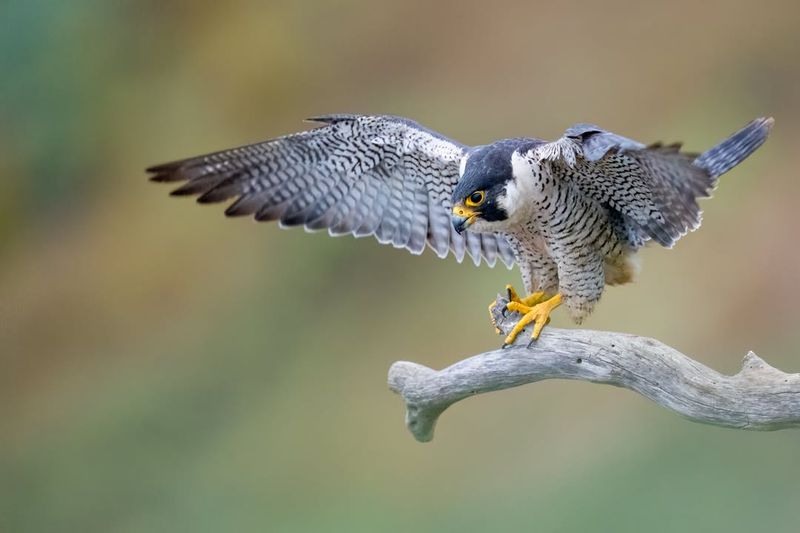
The Peregrine Falcon is an aerial acrobat of unparalleled skill, renowned for its breathtaking speed. Known as the fastest bird in the world, these falcons can reach diving speeds of over 240 miles per hour. Talk about a high-speed chase!
Found in a range of environments from urban skyscrapers to rugged cliffs, peregrines are versatile hunters. Their keen eyesight allows them to spot prey from great distances, and their aerodynamic bodies enable them to execute high-speed dives with precision. It’s no wonder they are revered among bird enthusiasts.
The recovery of the peregrine falcon from near extinction is a testament to successful conservation efforts. Their adaptability to urban settings has led to an increase in their numbers, proving that nature can thrive even in manmade landscapes. Watching a peregrine falcon in action is an exhilarating experience, a glimpse into the majesty and power of the natural world.
10. Prairie Dog
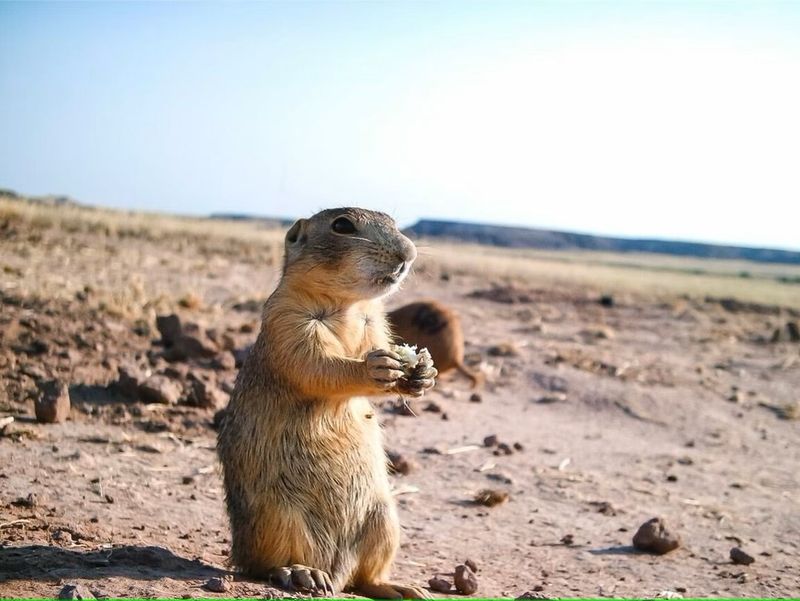
With a bark that sounds more like a chirp, the Prairie Dog brings a touch of whimsy to the wild plains. These social rodents are known for their complex underground burrows and intricate social structures, resembling a bustling community.
Living in large colonies called “towns,” prairie dogs maintain an elaborate communication system through various calls and gestures. Their vigilant nature helps them avoid predators, with one always keeping watch while others forage for food. It’s like having a built-in security system!
While often considered a nuisance by farmers, prairie dogs play a crucial role in their ecosystem. Their burrowing aerates the soil, promoting plant growth, and their presence supports a variety of other wildlife. Observing a prairie dog town is like peeking into a mini metropolis, full of life and activity. It’s a delightful reminder of the interconnectedness of nature’s inhabitants.
11. Raccoon
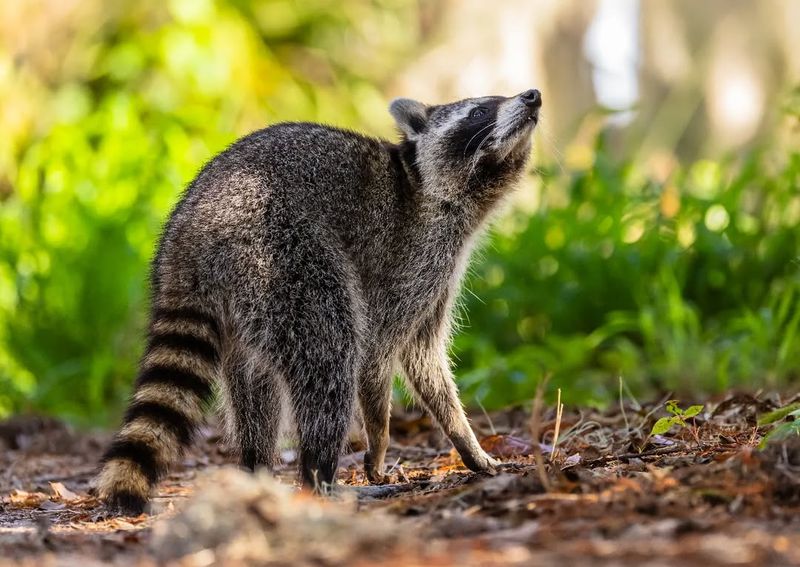
With their masked faces and nimble paws, raccoons are the ultimate night-time foragers. These clever critters are renowned for their resourcefulness, often spotted rifling through trash cans or raiding bird feeders in search of a midnight snack.
Raccoons are highly adaptable, thriving in both urban and rural environments. Their dexterous hands enable them to open containers and manipulate objects, showcasing a level of intelligence that’s both impressive and, at times, exasperating for humans. It’s like watching a miniature bandit at work!
Despite their mischievous reputation, raccoons play a vital role in their ecosystems, helping to control insect and rodent populations. Observing them in their natural habitat offers a glimpse into their curious world, a blend of cunning and charm that never fails to entertain. Just remember to secure your trash cans if you don’t want an unexpected visitor!
12. Red Fox
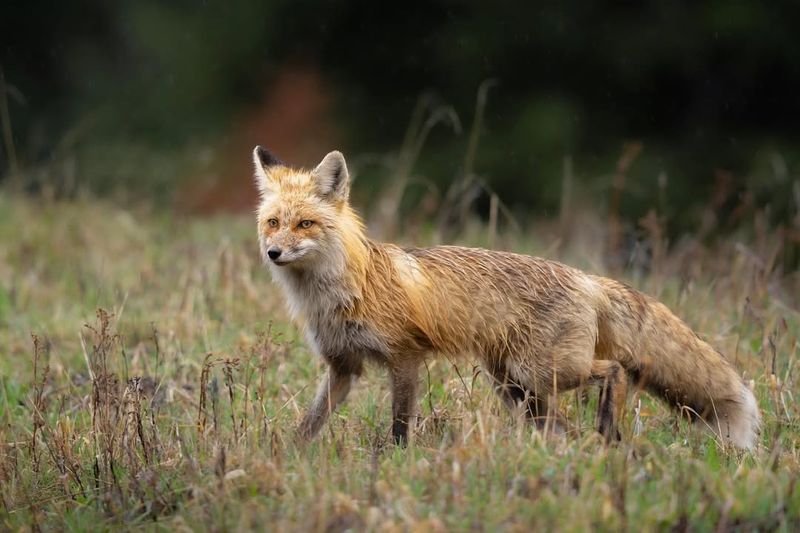
With its fiery coat and bushy tail, the Red Fox is a master of elegance and cunning. These adaptable mammals can be found in diverse habitats, from urban parks to remote woodlands, showcasing their remarkable ability to thrive in various environments.
Red foxes are skilled hunters, using their keen sense of hearing to locate prey beneath the snow. Their iconic pouncing technique is a sight to behold, as they leap gracefully to catch unsuspecting rodents. Talk about a sly move! Their diet is varied, allowing them to adapt to seasonal changes with ease.
Known for their solitary nature, red foxes are often seen alone, though they may form family groups during the breeding season. Their playful demeanor is infectious, and observing them in the wild is a reminder of nature’s beauty and ingenuity. Whether you encounter one in a city park or a secluded forest, the red fox is sure to leave a lasting impression.
13. Sea Turtle
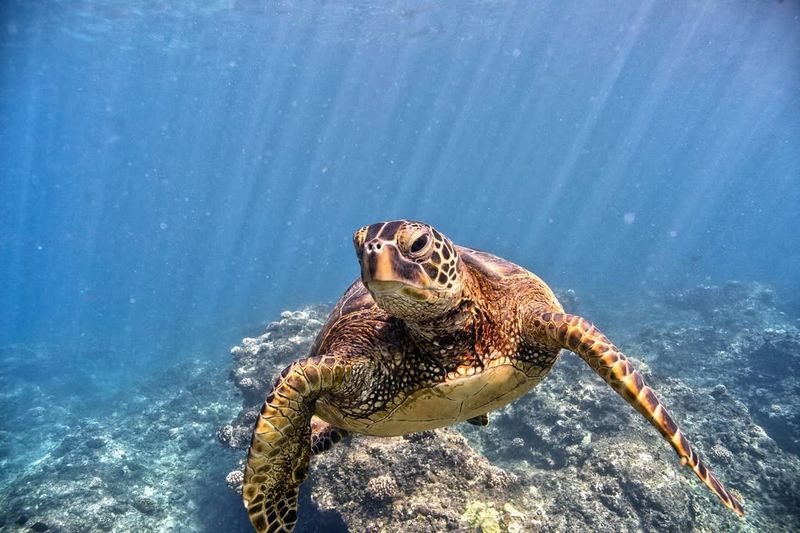
Gliding through the ocean with an elegance that belies their size, Sea Turtles are ancient mariners of the deep. These majestic creatures have been around for millions of years, navigating the oceans with a grace that captivates all who encounter them.
Sea turtles are known for their incredible migratory journeys, traveling thousands of miles between feeding and nesting grounds. Their long lifespan and slow reproductive rate make conservation efforts crucial for their survival. Observing a sea turtle in its natural habitat is a humbling experience, a chance to witness a creature from a prehistoric past.
Many species of sea turtles are now endangered, but efforts to protect nesting sites and reduce fishing bycatch have made a positive impact. Snorkeling or diving alongside these gentle giants offers a glimpse into a world of wonder, a reminder of the beauty and fragility of ocean life.
14. Snowshoe Hare
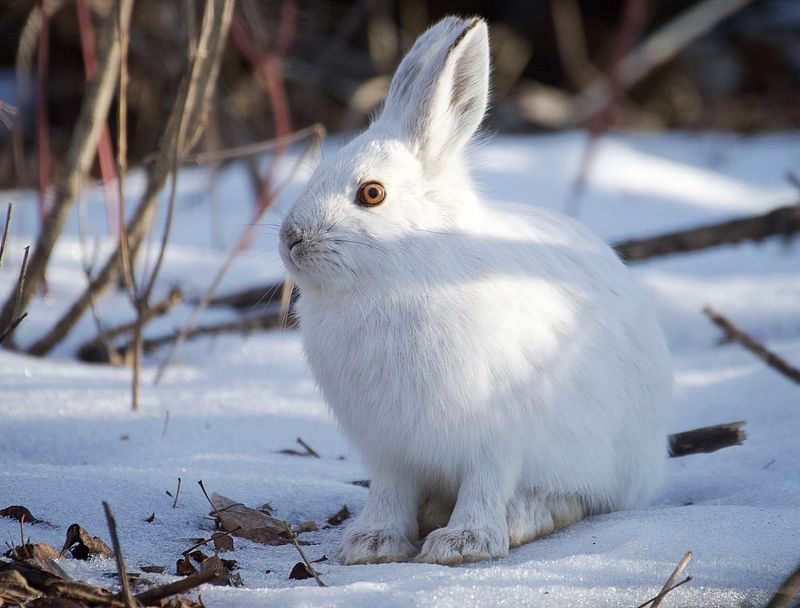
With the ability to change its coat color with the seasons, the Snowshoe Hare is a master of disguise. Found in the northern regions, these hares are known for their large, furry feet that act like snowshoes, allowing them to move swiftly across snowy terrain.
In summer, their fur is brown, blending with the forest floor. Come winter, they don a white coat, becoming nearly invisible in the snow. This remarkable adaptation helps them evade predators, proving that sometimes blending in is the best defense.
Snowshoe hares play a vital role in their ecosystem, serving as prey for a variety of predators. Their population cycles have a significant impact on the wildlife around them, illustrating the intricate balance of nature. Spotting a snowshoe hare in its natural habitat is a testament to the wonders of adaptation and survival.
15. Wild Turkey
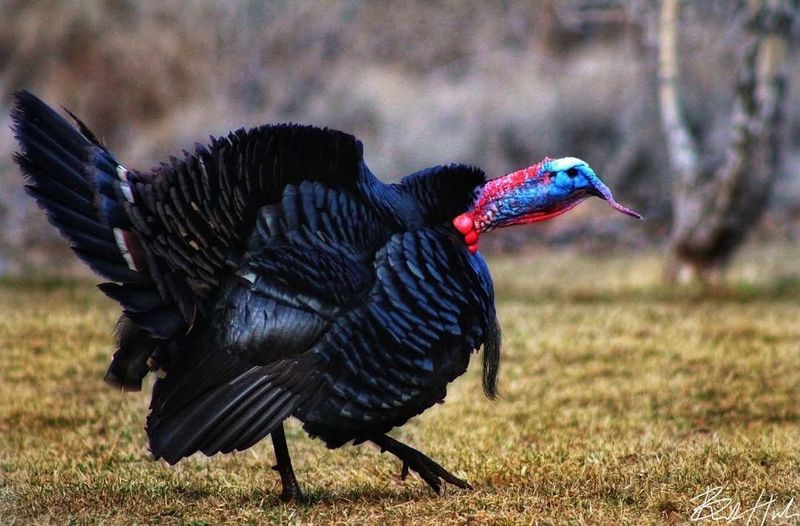
Once a symbol of the American Thanksgiving feast, the Wild Turkey is a bird of surprising beauty and resilience. With iridescent feathers and a fan-shaped tail, these birds can be quite the show-offs during mating season.
Wild turkeys are social creatures, often seen in flocks foraging for seeds, insects, and other food. Their keen eyesight and strong legs make them adept at evading predators, despite their size. It’s not uncommon to see them taking to the trees for roosting, proving that these birds are more than just a meal.
Conservation efforts have helped wild turkey populations rebound after they were nearly wiped out by hunting and habitat loss. Today, they roam freely across various landscapes, a testament to successful wildlife management. Observing a wild turkey in its natural setting is an uplifting experience, a reminder of nature’s ability to recover and thrive.
16. Gray Wolf
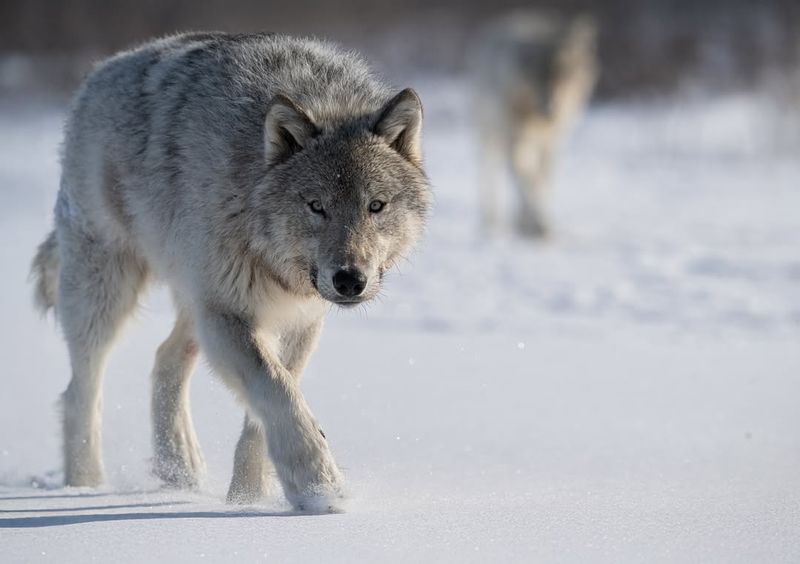
With a presence that inspires both fear and admiration, the Gray Wolf is an iconic symbol of the wilderness. These social animals live in packs, working together to hunt and raise their young in a tightly-knit family unit.
Gray wolves are highly intelligent and adaptable, capable of surviving in diverse environments. Their haunting howls can be heard echoing across the landscape, a sound that sends shivers down the spines of many. Despite their fearsome reputation, wolves are shy around humans and prefer to steer clear of our presence.
Conservation efforts have been crucial in helping gray wolf populations rebound, particularly in areas where they were once eradicated. Observing a pack in the wild is a thrilling experience, offering a glimpse into the complex social dynamics of these fascinating creatures. It’s a reminder of the untamed beauty and complexity of the natural world.
17. American Black Bear
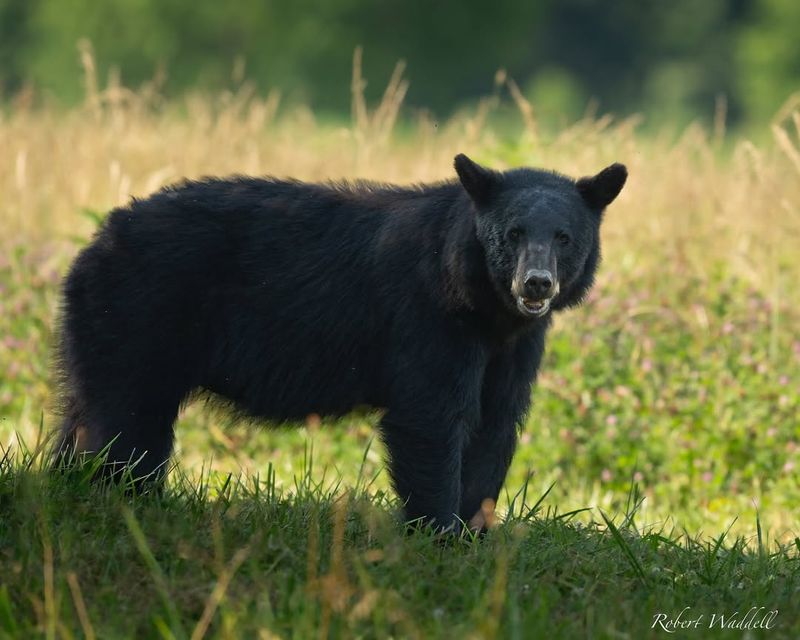
Roaming the forests with a gentle curiosity, the American Black Bear is a symbol of wilderness. These bears are known for their adaptability, thriving in a range of habitats from dense forests to mountain meadows.
Despite their size, black bears are skilled climbers and often forage for food in trees. Their diet is diverse, including fruits, nuts, insects, and occasionally small mammals. While they may appear intimidating, black bears are generally shy and prefer to avoid human interaction.
Conservation efforts have helped black bear populations grow, allowing them to reclaim parts of their natural range. Observing one in the wild is a serene experience, a chance to witness nature’s quiet strength and resilience. Always remember to admire from a distance, as these bears, while gentle, are still wild animals.
18. American Elk
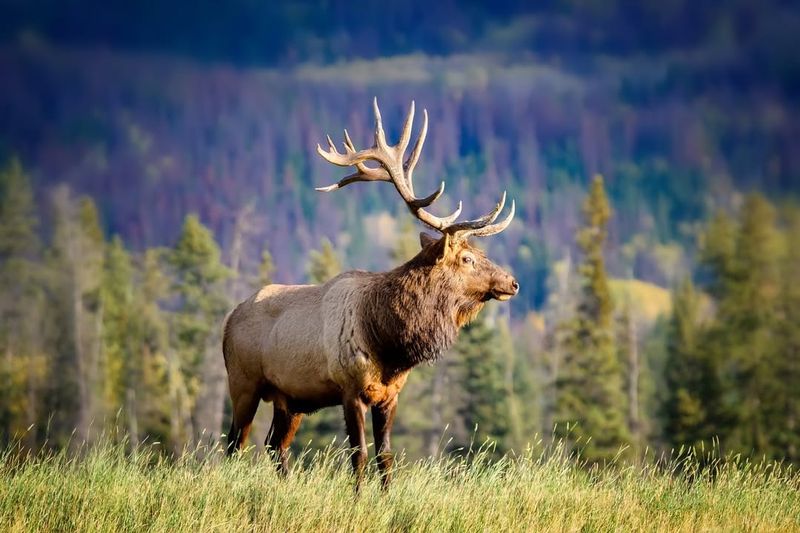
Graceful and imposing, the American Elk, or wapiti, is a sight to behold in the wild. With antlers that can span over four feet, these magnificent creatures are a symbol of strength and grace.
Elk are social animals, often seen in herds grazing in meadows and forests. Their haunting bugle call during mating season is a sound that resonates through the wilderness, a call to arms for rivals and a serenade for potential mates.
Conservation efforts have helped elk populations recover from overhunting and habitat loss. Today, they roam freely in places like Yellowstone, where they play a crucial role in the ecosystem. Observing an elk in its natural habitat is an awe-inspiring experience, a reminder of the wild beauty and majesty of the natural world.
19. Coyotes
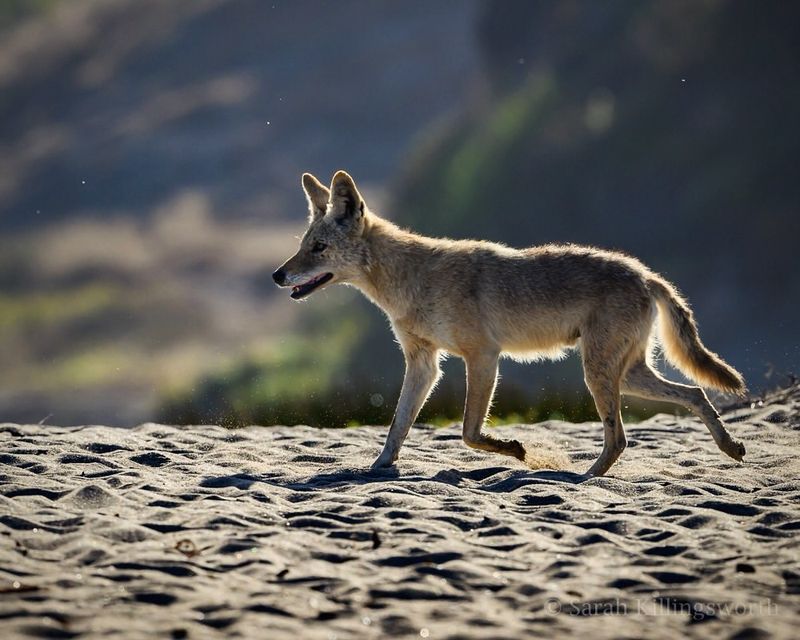
Known for their adaptability and cunning, coyotes are true survivors of the wild. These canines are found in a variety of habitats across the U.S., from urban areas to remote deserts.
Coyotes are highly intelligent and resourceful, often seen hunting alone or in pairs. Their diet is varied, including small mammals, fruits, and even insects. Their haunting howl is a defining sound of the wilderness, a call that echoes through the night.
Despite being viewed as pests by some, coyotes play an important role in their ecosystems, controlling rodent populations and maintaining ecological balance. Observing a coyote in its natural setting offers a glimpse into the resilience and ingenuity of nature. It’s a reminder that even in our modern world, wildlife continues to thrive.
